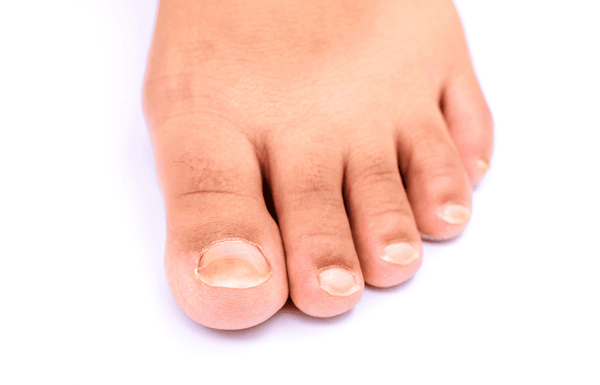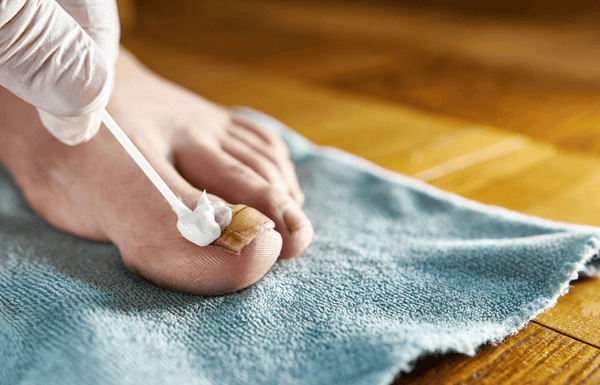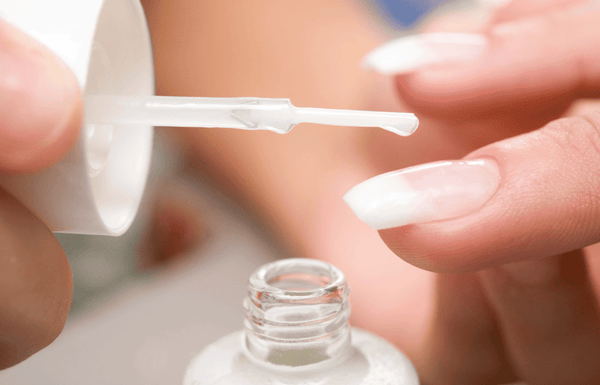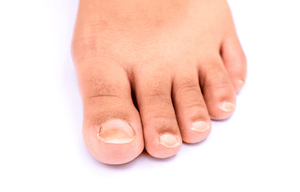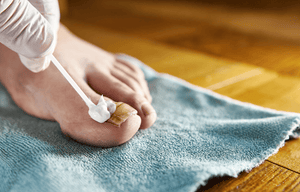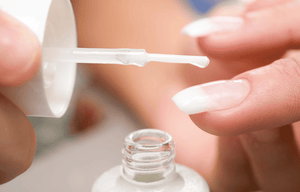
Our feet are complex structures that carry us through life, and they’re highly vulnerable to a common, often downright unsightly, problem: fungal infections. From unrelenting itching to discolored, brittle nails, foot fungus can be more than just an aesthetic concern; it can be extremely uncomfortable, spread, and impact your quality of life. Many mistakenly believe all fungal issues on their feet are the same, which can lead to misdiagnosis and ineffective treatment. Knowing the basic difference between nail fungus, medically known as onychomycosis, and skin fungus (athlete’s foot, or tinea pedis) is the first step towards proper and effective treatment. Continue reading as we break down how to tell them apart, explain how they spread, and outline the specific actions you need to take for each condition. Find out what’s really growing on your feet!
Basics of Foot Fungal Infections
Fungal infections, whether on the nails or skin, are primarily caused by microscopic organisms called dermatophytes. Sometimes, yeasts and molds can also be culprits. These fungi thrive in specific conditions: environments that are warm, dark, and damp, which explains precisely why your feet are especially vulnerable. Common triggers that pave the way for an infection include excessive sweat, poor foot hygiene, and walking barefoot on shared, contaminated surfaces. Once these fungi find a hospitable host environment, they multiply and cause distinct symptoms we’re about to explore.
Nail Fungus (Onychomycosis): Signs and Symptoms
When you hear the term toenail infection, often what's being referred to is onychomycosis, or nail fungus. This type of infection affects the nail plate itself and, in some cases, the nail bed underneath. Symptoms tend to develop slowly and persistently, often going unnoticed in their very early stages. Here are the key signs to watch for:
- Thick, yellow, brittle, or crumbly toenails
- Nail separation from the nail bed (Onycholysis)
- Foul odor or nail deformity
- Usually painless but slow-growing and persistent
- May affect one or multiple nails
Skin Fungus (Athlete’s Foot): Signs and Symptoms
In contrast to the nails, skin fungus primarily affects the skin of the feet, most famously known as athlete’s foot or tinea pedis. This is a highly contagious infection that manifests with symptoms distinctly different from nail fungus, including:
- Itching, burning, and redness between the toes or on the soles
- Flaky, scaly, or cracked skin
- Possible blisters or oozing.
- Often spreads quickly to both feet and may extend to the hands
- Mild odor
Key Differences: Nail Fungus vs. Skin Fungus
While both are fungal infections affecting the feet, the distinct characteristics of nail fungus and skin fungus can simplify identification:
Affected Area
Nail Fungus: Primarily affects the nails, most commonly the toenails.
Skin Fungus: Primarily affects the skin, typically between the toes, on the soles, or sides of the feet.
Appearance
Nail Fungus: Leads to thick, discolored (yellow, white, brown), brittle, crumbly, or distorted nails.
Skin Fungus: Causes skin to appear red, itchy, scaly, flaky, and sometimes develop blisters or cracks.
Primary Symptoms
Nail Fungus: Main symptoms are changes in nail appearance, discoloration, thickening, and deformity.
Skin Fungus: Characterized by intense itching, burning, redness, and skin flaking.
Growth/Spread
Nail Fungus: Tends to be slow-growing and persistent, spreading within and between nails.
Skin Fungus: Can spread relatively quickly, is highly contagious, and affects the skin surface.
Pain Level
Nail Fungus: Usually painless in its early stages, though severe cases can cause discomfort or pain.
Skin Fungus: Often causes significant itching and discomfort; can become painful if the skin cracks.
Can You Have Both at the Same Time?
Yes, it's very typical for a fungal foot infection like athlete's foot to spread to the toenails. If you have untreated skin fungus, the constant presence of fungal spores on your feet significantly increases the chances of those spores invading the nail plate and causing a toenail infection. Ignoring one while treating the other can lead to a cycle of reinfection. For instance, if you successfully treat your athlete's foot but still have nail fungus, the fungi from the nail can easily reinfect your skin. A holistic approach that addresses all present fungal infections is crucial for lasting relief and prevention of recurrence.
Treatment Options for Fungal Infections on Feet
For Nail Fungus
Treating nail fungus is notoriously more challenging and time-consuming than treating skin fungus because the nail plate acts as a barrier, making it hard for medications to penetrate.
- Topical Antifungal Nail Lacquers: For mild to moderate cases, your doctor might prescribe antifungal nail polishes (like ciclopirox, efinaconazole, tavaborole) that you apply directly to the nail daily. These need to be used consistently for several months, often up to a year, as results are slow to appear.
- Oral Antifungal Medications: Prescription oral medications like terbinafine (Lamisil), itraconazole, or fluconazole work systemically, reaching the fungus through the bloodstream. Treatment typically lasts 12 weeks for toenails, but can take many months.
- Laser Therapy or Removal in Severe Cases: Some specialists offer laser treatments that target and destroy the fungus within the nail. In very severe, painful, or resistant cases, partial or complete surgical removal of the infected nail may be necessary.
For Skin Fungus (Athlete’s Foot)
Luckily, skin fungus is generally easier to treat than nail fungus:
- OTC Antifungal Creams, Sprays, Powders: For most cases of athlete’s foot, over-the-counter antifungal products containing ingredients like clotrimazole, miconazole, terbinafine, or tolnaftate are very effective. Apply them twice daily for 2 to 4 weeks, even if symptoms clear up sooner, to ensure the infection is fully eradicated.
- Prescription-Strength Topicals for Persistent Cases: If OTC options aren't working, your doctor may prescribe stronger topical antifungal creams or gels.
- Daily Hygiene and Dry Feet Practices: Wash your feet daily with soap and water, and dry them thoroughly, especially between the toes.
How to Prevent Future Infections
1. Wear breathable shoes and moisture-wicking socks
Opt for shoes made of leather, canvas, or mesh that allow air circulation. Avoid tight-fitting shoes. Choose socks made from synthetic moisture-wicking materials (like acrylic, nylon, or blends) or wool, rather than cotton, which traps moisture.
2. Never walk barefoot in public showers, gyms, or pools
Always wear flip-flops or water shoes in these communal, moist environments.
3. Disinfect nail tools and change socks daily
If you use clippers or files at home, disinfect them before and after use. Never share nail tools. Change your socks at least once a day, or more frequently if your feet tend to sweat a lot.
4. Use antifungal powder or spray preventively if prone to outbreaks
If you're particularly susceptible to athlete's foot, a daily dusting of antifungal powder in your shoes and on your feet can help keep fungal growth at bay. You can also use convenient, mess-free antifungal sprays and soaks to keep your feet fortified from microscopic invaders.
Stop Foot Fungus in Its Tracks
A foot fungus, whether in the nails or skin, may start small and seem like a minor annoyance, but if misdiagnosed or left untreated, it can become a chronic, persistent problem, potentially spreading and causing more discomfort.
Don't ignore symptoms on your feet. Persistent itching, redness, flaking, or changes in your nail's color and texture are signals that warrant attention. Early action means faster recovery, less risk of the infection spreading, and a quicker return to healthy, comfortable feet.
Stop foot fungus in its tracks today with Dr. AntiFungus spray and soak and prevent those pesky infections from coming back!
